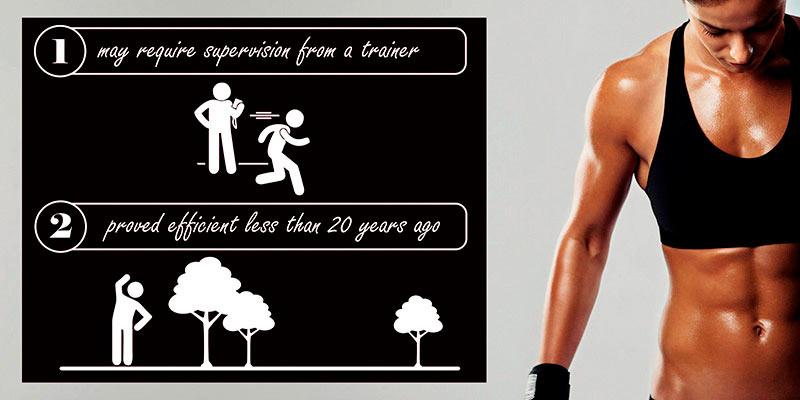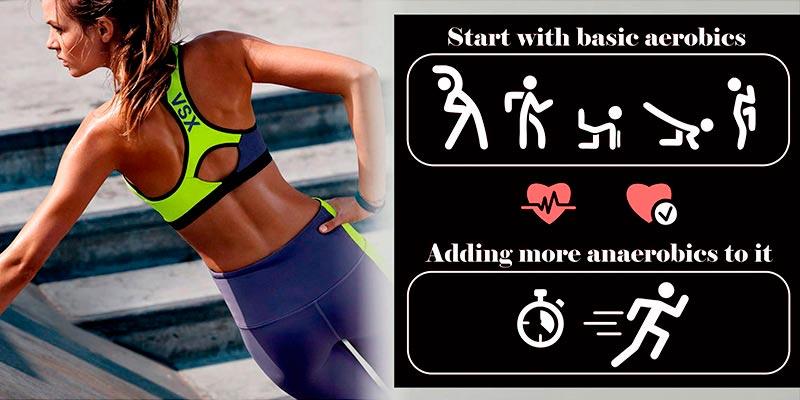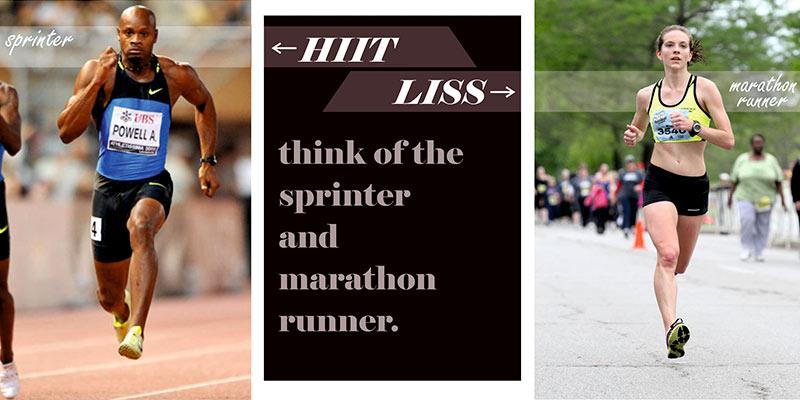Why Cardio?
Any physical training activates the chemical reactions in our bodies that take the fat acids and, in conjunction with the oxygen, create adenosine triphosphate - the molecules which basically provide the energy to our cells and organs. As the scientists have found out many years ago, one of the easiest methods to boost such reactions is by doing steady-paced aerobics training for about 1 hour or more - such as running, cycling or swimming. Therefore, doing a low-intensity steady-state cardio (LISS) does really help you get into shape reasonably fast by using stored fat as a source of energy, training your muscles and providing tissues with more blood and useful elements. Fairly recently, it turned out that there’s even more efficient way to lose those nasty fat deposits and expand your physical capabilities to the higher levels.
So, What Is It?
The new practices have proved that performing as many intense anaerobic exercises with as short recovery duration between them as possible in less than 30 minutes leads to the greater yield. Such training is called a high-intensity interval training (HIIT). So, by rapidly alternating the bursting exercises with steady-state ones, our body responds by producing the bigger amount of fat-releasing hormones in order to keep up with the increased energy demand. The very simplified idea behind this is to get ourselves exhausted as quickly as possible in order to create the specific post-workout fat-torching afterburn that may last up to 24 hours, also known as EPOC.
Why Hasn’t Everyone Turned to These Practices yet if They Are So Efficient?
Should I Only Do HIIT Now?
Not at all. As we’ve mentioned before, polishing your exercise program may be more important, especially in the early stages. Start with basic aerobics, step by step adding more and more anaerobics to it. You can stick with a simple slow-paced jogging until you feel ready. From there, you can gradually pump up your training by trying to do things faster and alternating between slow and bursting paces with less time to recover. This will get your heart revved up, which is exactly what is needed. Work your way up and don’t be afraid if your training sessions become shorter as long as you feel exhausted to the point you can’t go further. Remember, practice makes perfect.
What Else Should I Know?
Note, a standard HIIT routine rarely takes longer than 20 minutes, but still requires a regular cardio warm-up before it. Also, you should give your muscles time to recover between the training sessions, so HIIT shouldn’t be done more often than 3 days per week.
One of the best parts of any cardio is that it can be done almost anywhere: on the street, in the park, in the gym or just at home. If you prefer outdoor activities like jogging, imagine hitting the imaginary Turbo button and run as fast as you can for 10-15 seconds, but don’t just stop there - return back to the jogging for 20 seconds. Then burst again for 10-15 seconds. Alternating the paces is the key point at this stage.
At home, try doing tabata. For instance, start with jabs, jumping jacks plus squats in quick succession for 20 seconds and give yourself only 10 seconds of rest before the repeat. After about 3 repeats, switch to the next exercise. Don’t focus on a single muscle and don’t give your body time to adapt.
What’s the Difference Then?
HIIT cardio training increases your stamina, power, speed, muscle growth, and most of all burns your fat faster by improving the metabolism. Doing it will shorten the time you spend working out, which is great for people like students, who want to spend time on other things. During the high-intensity workout, your veins and heart muscles train as well, reducing the risk of coronary diseases. Thus, even people with a specific heart condition may find it easier to do it, rather than long-termed wearisome cardio.
Even so, LISS is the best way to build your endurance, which you might require for HIIT or other activities. It’s still an effective way to burn your calories and drop your weight by losing the fat and even the muscle mass in the long run. Unlike HIIT, LISS training can also be done every day. Comparing them, think of a sprinter and a marathon runner. While the first one has to run as fast as possible, the second one should be capable of running for a long time.
The bottom line is that both LISS and HIIT are very effective ways to evolve your physical skills and burn fat by boosting your metabolism. Think about what you want to achieve and choose for yourself
References:
Shannon Clark Going Steady: 5 Reasons To Do Steady-Stay Cardio, Bodybuilding. April 13, 2015.
Jessica Migala LISS Cardio: What It Is and Why It Works, Daily Burn. May 15, 2016.
Susi May Why a Moderate Workout Is More Than OK, POPSUGAR. May 31, 2015.






